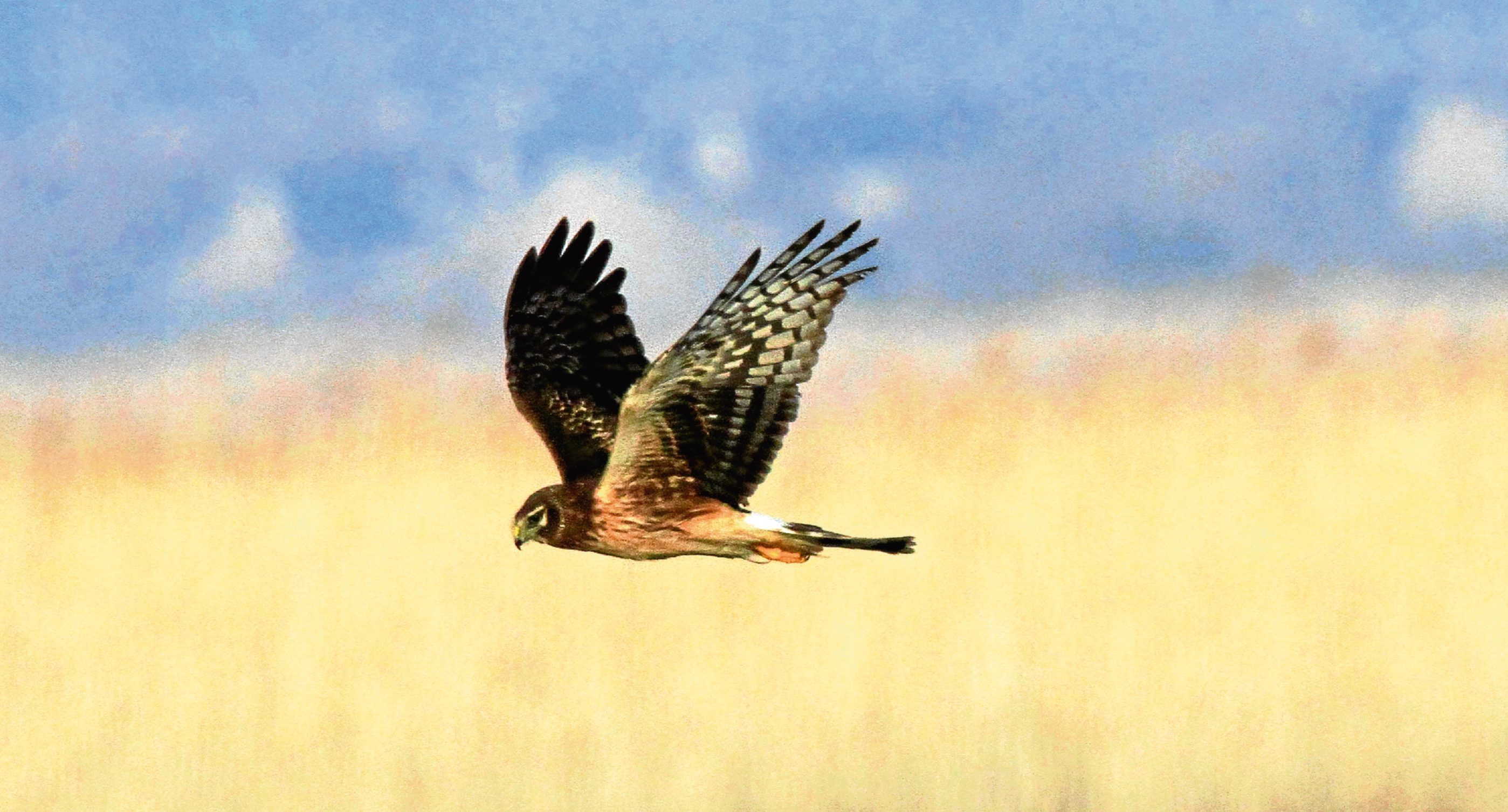The day evolved, like so many of this summer’s days, out of showers and downpours into too-good-to-be-true sunlight.
So I was under no illusions as I took the hill track into the Ochils with the afternoon sun warm on my back and the scent of warm earth on the air.
The verges glittered with the pinprick flowers of eyebright and tormentil and the strands of a low fence thickened with roaming squads of meadow pipits.
After half an hour I felt the wind quicken and the air cool. I looked over my shoulder to where the mountains in the north-west were locking horns with new storm clouds.
“So soon,” I muttered to the meadow pipits.
But I was distracted by a much bigger bird above the northern skyline. It dived down the wind, stalled, turned in its own length, faced the wind and stopped on the air. It held its wings wide and straight, and apart from the wind ruffling its feathers, it was a miracle of stillness.
It fell 10 feet and stopped again, then 10 more and stopped again a yard above the tall, thick hill grass that surged to the wind’s command like the ocean to the moon’s. Nothing doing there, so it drifted ahead into the wind at a notch above zero knots, while its tribal badge (a white blaze at the base of its tail) gleamed in the sun.
This is a good vole year, which means it should be a good hen harrier year, but it never is, not in Scotland, not in the land of the shotgun and the poisoned bait and the grouse moor. I see one or two most years in the Ochils, whether voles prosper or not. Never three or four. She lifted, banked, crossed the skyline, vanished. I wished her safe journey. A forlorn hope, that one.
Over my shoulder, a cloud the size of Stirlingshire and the darkest shade you wouldn’t call black had obliterated the mountains and was heading my way. I asked the meadow pipits if this was how it feels to be a meadow pipit in the eye of a hen harrier, but they had already headed for deep cover.
I took the hint. I know this hill and there was a narrow, sheer-sided gully a quarter of a mile ahead which would offer shelter of a kind. I donned head-to-toe waterproofs and picked up the pace, reaching the gully with two minutes to spare.
Just as the storm reached the far side of the glen, something like a blown leaf dived into the gully, but when it made a perfectly-controlled landing on the opposite wall about ten feet away, I saw that it was a red admiral butterfly. It crept up the mossy surface of a small rock and under the tips of some ferns that grew thickly there. Then it began climbing inch by inch ever deeper into the cover of the ferns until it was lost to my sight among roots.
Then all hell broke loose and the butterfly and I resolved in our different ways to sit out the storm.
It threw sleety sheets at the hills, and in 15 minutes the two-foot-wide sliver of a burn that had wound peacefully through the gully changed colour to a dirty white and adopted a tone of voice with distant echoes of Satchmo.
Then the storm was done, the wind died, the sun shone and the ferns and the wild roses and the heather and all the other flora of the gully walls glistened and dripped.
I thought I might wait for the red admiral to emerge, thank it for its company and take its photograph, but as long as the drips still fell it stayed put, so I let it be and photographed its hiding place instead.
In the wake of the storm the track was more or less awash. As I stopped to peel off the waterproofs again, my eye was caught by a tiny movement in the edge of a new puddle that was draining itself into the ditch. At the outflow, a tiny white moth fluttered uselessly against the tug of the water.
I put a fingertip into the puddle and it crept on to what must have seemed a particularly mysterious intervention of dry land. I let it step from finger into grass to dry off in the sun, and told it that I been grateful for the company of its distant kin, the red admiral, and this was my way of saying thank you.
The mountains were basking in sunlight and the meadow pipits were thickening the fence again. I wondered where the harrier had ridden out the storm.
l Jim Crumley will be discussing his new book, The Nature of Winter, at the Edinburgh International Book Festival on Wednesday August 16 at 5.30pm.










